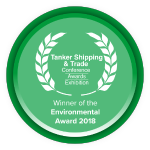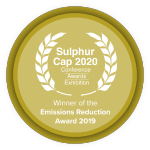
The most environmentally friendly shuttle tanker
Shuttle tankers operate in extremely challenging sea conditions and require precise, reliable and safe operations at all times, particularly when loading cargo in heavy sea conditions using dynamic positioning (DP).
With a strong belief that the market will become more stringent with greater focus on environmental impact, fuel efficiency and economy, TEEKAY set out to replace their fleet of shuttle tankers trading in the strict regulatory environment of the North Sea.
Wärtsilä has collaborated with the shipping company to apply a broad range of solutions for a new tanker class that reduces not only the environmental impact from the vessel itself but from the cargo too. Developing the new E-Shuttle tanker concept together with TEEKAY required a total departure from the traditional shuttle tanker systems.
Four vessels are currently in production. Once completed, they’ll be the most environmentally friendly shuttle tankers ever built.
This is not a design evolution, this is a design revolution!


The award-winning concept explained:
A new energy system
Shuttle tankers have traditionally been powered by dedicated twin 2-stroke diesel engines with an additional four 4-stroke auxiliary gensets power source for handling DP operations.
A new energy system will replace this configuration with four 4-stroke, generator sets with batteries as the only power source onboard providing energy to main propulsion and thrusters.
With this new Low Loss Hybrid (LLH) system, the total mechanical power needed is reduced from 27MW to 20MW which means less fuel consumption and reduced running hours. The LLH system uses batteries for peak load shaving and black out prevention. It also offers the highest levels of efficiency and crucially a shared energy capacity that enables more efficient energy management in the event of a failure during DP operation.
LNG fuel system
The new shuttle tanker will be equipped with a Wärtsilä LNGPac comprising 2000 scm IMO-Type C tank, vaporizing and heating media skids and two off-bunker stations.
By moving away from MGO to LNG the CO2 equivalent emissions will be reduced by 48%, while NOx, Sox and particulates are almost entirely eliminated.
Unique VOC recovery system
Traditionally, the oil vapour in the tanks is vented into the atmosphere. This vapor includes substances such as methane, which can be up to 80 times worse than CO₂ emissions. This has a massive impact on the environment.
The E-Shuttle will be fitted with a breakthrough VOC recovery system that captures these harmful emissions and converts them into valuable fuel.
The liquified VOC is stored onboard, and mixed with LNG to be used as fuel. The light VOC gases are used to power the gas turbines. We’re talking about removing 30000tons of CO2 annually from the environment. This is equivalent to the emissions produced by 25000 cars.
Up to 100 tons of recovered VOC can be collected on a single laden voyage which represents 30-40% of the fuel required for that voyage.
Wärtsilä insight factory – Optimised by Eniram
Within data lies hidden savings and revenue opportunities – we use this data in a way that delivers actionable insight to improve vessel performance.
The E-Shuttle will be equipped with a state-of-the art Ship Performance Monitoring System for data collection and monitoring which will be integrated with the automation system, bridge system and reference systems.
Automated data analytics will allow for real-time adjustment, performance improvement, cost and time saving. A Voyage Reporting System will capture the dynamics of TEEKAY’s E-Shuttle tanker operation to serve its commercial needs and in doing so, enabling fleet and vessel decisions to be made quickly and effectively.
Reporting will include:
- Speed
- Engine Performance
- Propulsion Power
- Fuel consumption
- VOC and NOx
- IMO and EU regulatory reporting
The main ecological and economical features of TEEKAY’s E-Shuttle tankers compared to traditional vessels:
- CO2 eq. reduced by more than 48%
- NOx reduction of 88%
- SOx and Particles almost entirely eliminated
- Use of VOC as fuel reduces LNG needed per voyage by up to 40%
- Reduces overall fuel consumption by 11%
Wärtsilä and TEEKAY are collaborating to develop the shuttle tanker of the future.